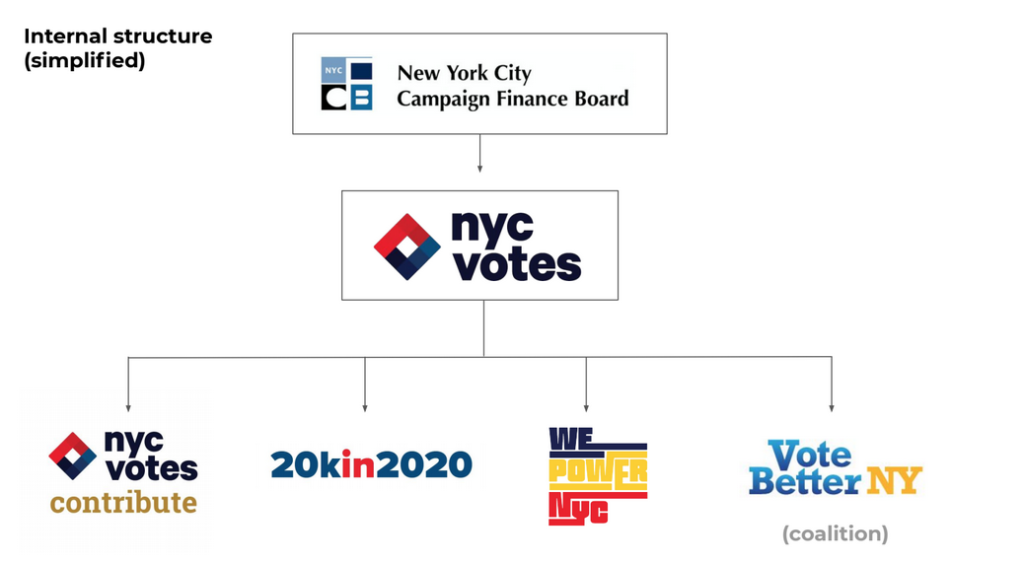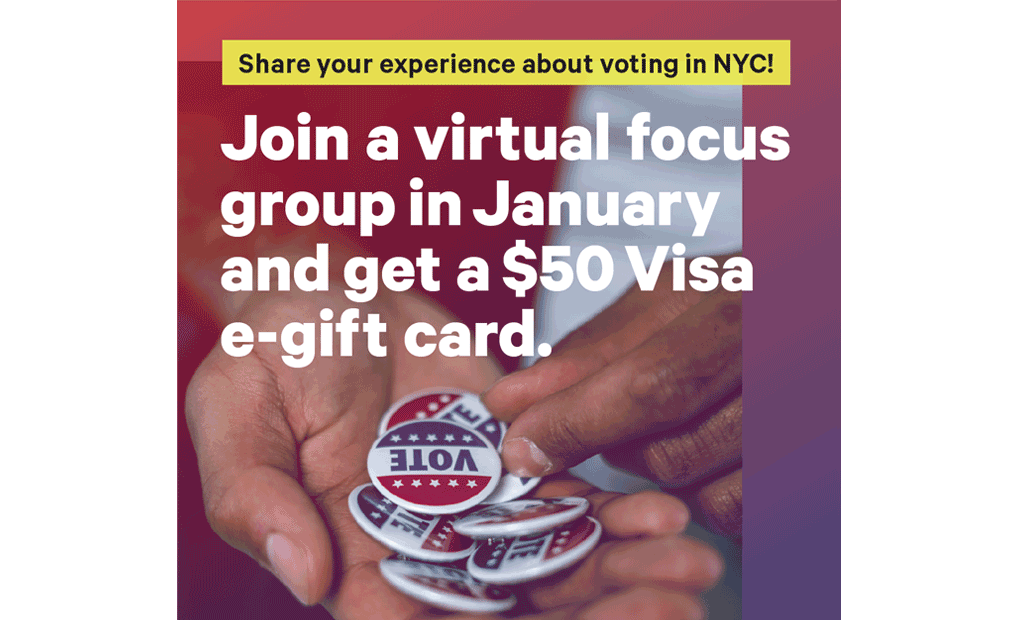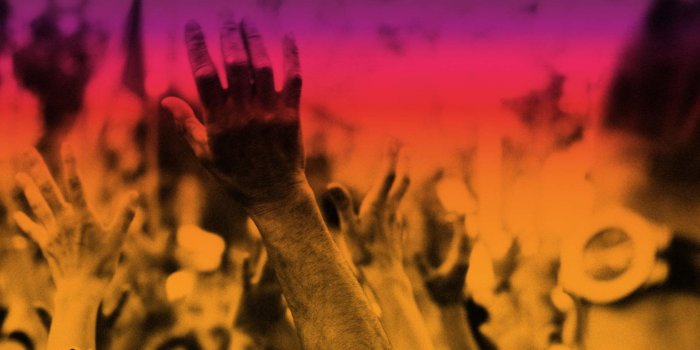Using research to bring out more voters
The NYC Campaign Finance Board (CFB) is a nonpartisan, independent city agency that administers public matching funds for candidates, oversees campaigns’ fundraising and spending, and engages voters directly around elections through their NYC Votes sub-brand. One of their goals is to ensure that all voters have equal access to the educational resources and information they need to participate in local elections. This was particularly urgent in 2021, as New York City experienced its largest local election in at least two decades and simultaneously rolled out ranked-choice voting for the first time in a citywide primary. The Campaign Finance Board needed the right set of brand and communications tools to pull this off.
Introducing election information with confidence and clarity
The voting landscape in which the Campaign Finance Board exists is complex and crowded, making it difficult for organizations to differentiate themselves and their messaging. For voters, the difficulty in determining the source of information and the overlapping perceptions of brands and organizations contributes to confusion. Big Duck’s research examined how the CFB and municipal elections generally are viewed by New Yorkers. By listening to and centering the voices of New Yorkers who have historically been underrepresented in our local elections (including first-time voters, young voters, recently naturalized citizens, and more), the CFB’s brand strategy and subsequent communications would help all New Yorkers engage more deeply in the 2021 elections.
Connecting with the community through research
In order for the Campaign Finance Board to design new communications tools grounded in the needs of NYC voters, Big Duck conducted qualitative and quantitative research and a lot of it—fast. In addition to reviewing existing materials and the civic engagement peer landscape, we conducted focus groups, interviews, and surveys with New Yorkers.
Big Duck also carried out a public opinion poll of over 1,200 NYC voters to help identify the local issues that would motivate them to participate in the upcoming election, and explore questions or barriers they faced for civic engagement. With the assistance of an external partner, we worked to gather a representative sample of city residents and counter any inherent biases in our approach by deliberately oversampling historically underrepresented voters.
After analyzing the insights and findings from this research, we learned that organizational awareness, ease of access, and information availability among voters were major hurdles. We addressed this by crafting a cohesive brand strategy to more effectively position the CFB and NYC Votes moving forward. The research also helped lay out a clear path for brand architecture—the strategy for organizing and expressing the relationships of an organization’s brands—that could inform the creation or consolidation of related brands, programs, and messages in the future.







